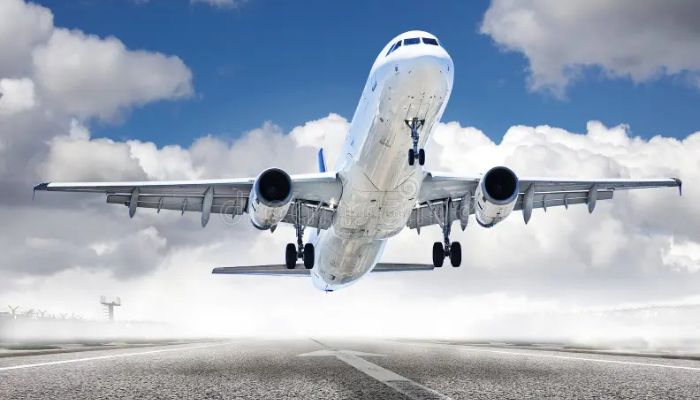Global air travel is being shaped by the increased adoption of digital and biometric technology for a faster airport experience, a focus on sustainability through Sustainable Aviation Fuel (SAF) and fuel efficiency, and shifts in passenger demand towards personalised experiences, longer trips, and the rise of solo female travel.
Additionally, the industry is navigating supply chain challenges while seeing robust passenger traffic growth, especially in the Asia-Pacific region.
From digitalisation and biometrics to AI integration and Customer service enhancements, these trends make passengers’ experience fast journeys, drive the adoption of biometric boarding gates, digital IDs, and mobile apps for a more convenient experience and optimise flight safety and routes.
Airports are increasingly becoming smarter – using intelligent systems for increased safety and efficiency.
Here is a list of five air travel trends that are reshaping travel experiences, according to a publication in Booking.com.
Personalised travel experiences
In an article by Ali Kessler in Booking.com, one key trend in improving the passenger experience is hyper-personalisation. Airlines are using data and AI to tailor services to individual preferences.
These include customised in-flight entertainment recommendations, personalised meal options based on dietary restrictions and preferences, and targeted promotions, ads and loyalty rewards.
Others include more ambient control (of seat, air, and lights) and more mobile interaction (your smartphone will become your digital travel agent and ticket).
Read also: VivaJets CEO calls for unified aviation reforms across Africa
Sustainable aviation technologies
Sustainable aviation technologies include Sustainable Aviation Fuels (SAF), which are renewable alternatives to jet fuel, and electric and hydrogen-powered aircraft, which are best suited for shorter routes or as a long-term zero-emission solution.
SAFs are renewable fuels made from sources like used cooking oil, waste, agricultural residues, or algae. They are “drop-in” fuels, meaning they can be blended with conventional jet fuel without needing to modify existing aircraft or infrastructure.
According to Ali Kessler, sustainable advancements aim to reduce the environmental impact of flying while improving efficiency and performance. Less fuel, less pollution, and more travel while saving the planet! Many airports are already green.
“Denver International Airport (DEN) is one of the top green, sustainable airports in the US, using one of the world’s largest solar power systems. Changi Airport in Singapore showcases a giant greenhouse with the world’s highest indoor waterfall and Dubai International Airport has added electric cars to its ground transportation,” Kessler said
Electric and hybrid-electric aircraft are revolutionising the future of aviation. Several companies are developing battery-powered aircraft for short-distance flights, promising quieter and cleaner air travel.
Advanced Air Mobility
According to Kessler, Advanced Air Mobility (AAM) stands out as a revolutionary concept that promises to transform how we move through the skies and space.
“It’ll take some getting used to, but AAM will change the entire travel landscape using various innovative technologies and modes of transportation that will redefine the boundaries of aviation. As the evolution of humans exists, so does the evolution of transportation. Think ‘Back to the Future’ and flying cars,” she stated.
According to her, for decades, people have been sold on the concept of personal aerial vehicles to alleviate ground transportation and free up the roads. However, private jets and planes are not an affordable option. UAM is a safe and efficient aviation transportation system that uses aircraft to operate and transport passengers at lower altitudes (like helicopters) within urban and suburban areas.
Read also: Qatar Airways sets new benchmark with over 100 Starlink-enabled widebody aircraft
Autonomous passenger drones, also known as electric vertical takeoff and landing (eVTOL) aircraft, are set to revolutionise short-distance travel: Zero-emission, electric-powered flight; capacity for 2-6 passengers; and autonomous operation reduces the need for pilots (autopilot)
Artificial intelligence in aviation
Artificial intelligence (AI) is revolutionising aviation by enhancing safety, efficiency, and sustainability across air traffic management, maintenance, and operations.
AI-powered systems optimise flight routes, predict and prevent mechanical issues through predictive maintenance, and assist air traffic controllers with complex decision-making. On the ground, AI is also used for baggage tracking, customer service, and airport management.
AI is everywhere, so it’s only natural that new aviation technology includes it. Its impact is far-reaching, touching every aspect of flying, from ground operations to in-flight experiences. Here is how AI will change the future of air travel.
Biometric and contactless technologies
Biometric and contactless technologies at airports use facial recognition, fingerprints, or other biological traits for contactless identity verification, enabling passengers to move through the airport without physical documents.
This streamlines the travel experience by reducing queues and improving hygiene at various checkpoints, from check-in and baggage drop to security and boarding gates. These systems also enhance security by providing more accurate and automated identity checks, with growing passenger acceptance of the technology.
According to Kessler, facial recognition and fingerprint scanners will make your airport experience smoother than ever. Just smile for the camera and you’re good to go! Biometric and contactless technologies will revolutionise the passenger experience.
These innovations promise to streamline processes, enhance security and reduce physical contact points throughout the journey, which means faster lines and fewer germs, she stated.









